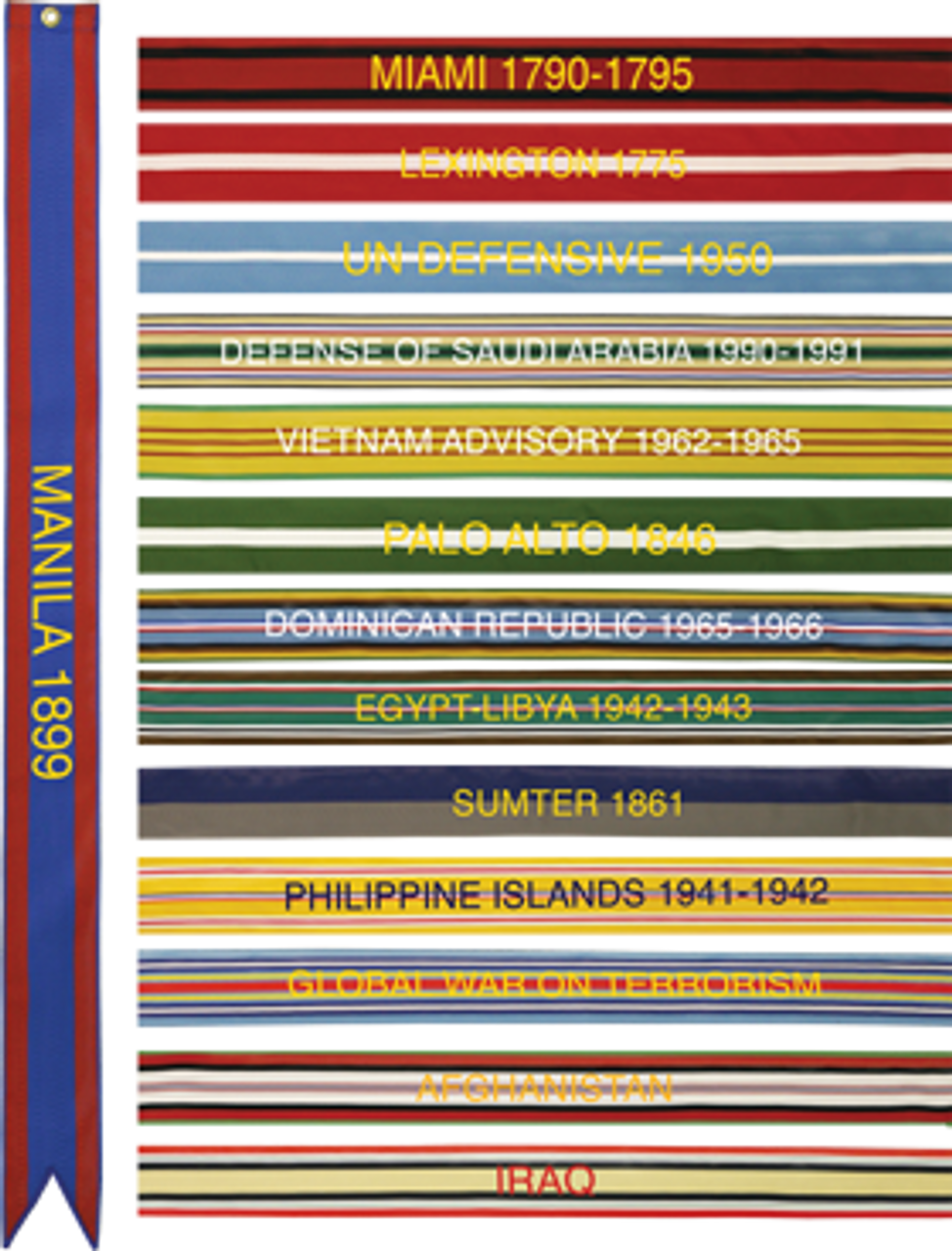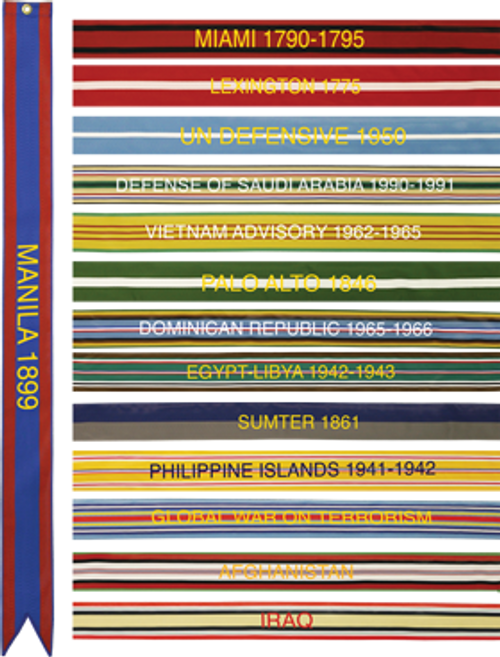Product Description
A set of 41 high-quality 4' battle adverse weather streamers designed for extreme conditions. Ideal for use in environments where high winds and adverse weather are common. These streamers are built to withstand harsh elements and provide added durability to flags in tough weather conditions.
- Set: 41 streamers
- Length: 4 feet each
The United States Army began back in 1775. It was originally under the control of the War Department until 1947, and since that time has been under the Defense Department. The U.S. Army fought in many of our nation’s wars; the Indian Wars of the 1790s, the War of 1812, the American Civil War, Spanish-American War, World War I and II, the Korean War, Vietnam War, Gulf War, war in Iraq, and the war in Afghanistan. When the American Revolutionary War began in April 1775, the colonial revolutionaries didn’t have an army, each colony had relied on their militia. Congress authorized 10 companies of riflemen. The first full regiment of Regular Army infantry, the 3rd Infantry Regiment, was not formed until June 1784. The Continental Army was quickly disbanded after the Revolutionary War due to the American distrust in standing armies. There were a couple of regiments that were given an exception, American needed someone to guard the Western Frontier and a battery of artillery guarding West Point’s arsenal. Even though the Continental Army was disbanded after the Revolutionary War our modern U.S. Army has its roots cemented in its history. Being the main land-based branch of the U.S. Armed Forces, its main purposes are defined as:
- Preserving the peace and security and providing for the defense of the United States, the Commonwealths and possessions and any areas occupied by the United States.
- Supporting the national policies.
- Implementing the national objectives.
- Overcoming any nations responsible for aggressive acts that imperil the peace and security of the United States.
The story of the 147th Infantry Regiment at Iwo Jima, is a great story showing the perseverance and drive of the United States Army. 147th Infantry Regiment is a unit of the Ohio National Guard and was an integral part of the Composite Army-Marine (CAM) Division. After being detached from their parent division in Fiji, they were sent to the Battle of Guadalcanal in early November 1942. While on garrison duty at Guadalcanal they trained extensively, from April 1944 to the end of the year they went through drills and marksmen training. The Regiment landed on Iwo Jima at around 1:35pm (1335) on March 20th, their original orders were to set up and defend the new base. By afternoon those orders had changed. They were to assist the Marines in their mopping-up operation. During the day the regiment’s battalions would set up ambushes, exploit abandoned tunnels and caves, and send out patrols; during the night they would spring ambushes on Japanese that had left their hiding spots in search of food and water. The 147th Infantry utilized a “corkscrew and blowtorch” tactic that was developed by ground troops during the Pacific theater. They swept the island for several months before being moved to Tinian where they were tasked with providing security for the top-secret B-29 Bomber units that were designated to drop two atomic bombs on mainland Japan.
(Open Market)







